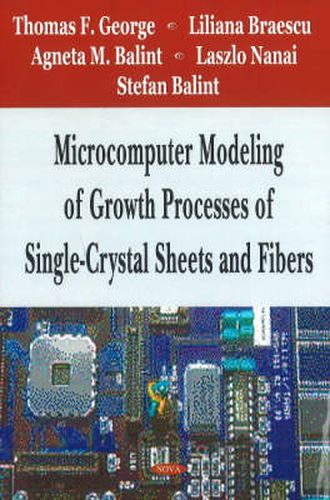Readings Newsletter
Become a Readings Member to make your shopping experience even easier.
Sign in or sign up for free!
You’re not far away from qualifying for FREE standard shipping within Australia
You’ve qualified for FREE standard shipping within Australia
The cart is loading…






Fibre (rod) and sheet-shaped crystals with specified size for use as final products without additional machining are required in various applications of modern engineering. In order to avoid formation of internal mechanical stress in the crystal, lateral surface shaping without contact with container walls is preferred. As the crystal is not restricted by crucible walls, its cross-section is determined by the meniscus-shaping capillary forces and the heat and mass-exchange in the melt-crystal system. Any variation of the pulling rate, pressure, temperature gradient in the furnace, and melt temperature at the meniscus base leads to a change in the crystal cross-section and to pinch formation. Over the past two decades, many experimental and theoretical studies have been reported on a powerful approach to crystal lateral surface shaping without contact with container walls, namely the so-called edge-defined film-fed growth (EFG) technique. The shape and size of a single crystal grown by EFG is determined by the shape and size of the meniscus, (i.e : the liquid bridge retained between the die and the crystal) which depend on the radius or half-thickness of the die and other properties such as pulling rate, pressure, temperature gradient and melt temperature. In this book, theoretical and numerical results are obtained using a non-linear mathematical model of the EFG method. Theoretical results presented for fibres and sheets are rigorously obtained on the basis of the equations of the model. Numerical results are obtained on the basis of theoretical results using experimental data. Such results offer a complete package of the possibilities of the model for equipment designers and practical crystal growers.
$9.00 standard shipping within Australia
FREE standard shipping within Australia for orders over $100.00
Express & International shipping calculated at checkout
Fibre (rod) and sheet-shaped crystals with specified size for use as final products without additional machining are required in various applications of modern engineering. In order to avoid formation of internal mechanical stress in the crystal, lateral surface shaping without contact with container walls is preferred. As the crystal is not restricted by crucible walls, its cross-section is determined by the meniscus-shaping capillary forces and the heat and mass-exchange in the melt-crystal system. Any variation of the pulling rate, pressure, temperature gradient in the furnace, and melt temperature at the meniscus base leads to a change in the crystal cross-section and to pinch formation. Over the past two decades, many experimental and theoretical studies have been reported on a powerful approach to crystal lateral surface shaping without contact with container walls, namely the so-called edge-defined film-fed growth (EFG) technique. The shape and size of a single crystal grown by EFG is determined by the shape and size of the meniscus, (i.e : the liquid bridge retained between the die and the crystal) which depend on the radius or half-thickness of the die and other properties such as pulling rate, pressure, temperature gradient and melt temperature. In this book, theoretical and numerical results are obtained using a non-linear mathematical model of the EFG method. Theoretical results presented for fibres and sheets are rigorously obtained on the basis of the equations of the model. Numerical results are obtained on the basis of theoretical results using experimental data. Such results offer a complete package of the possibilities of the model for equipment designers and practical crystal growers.